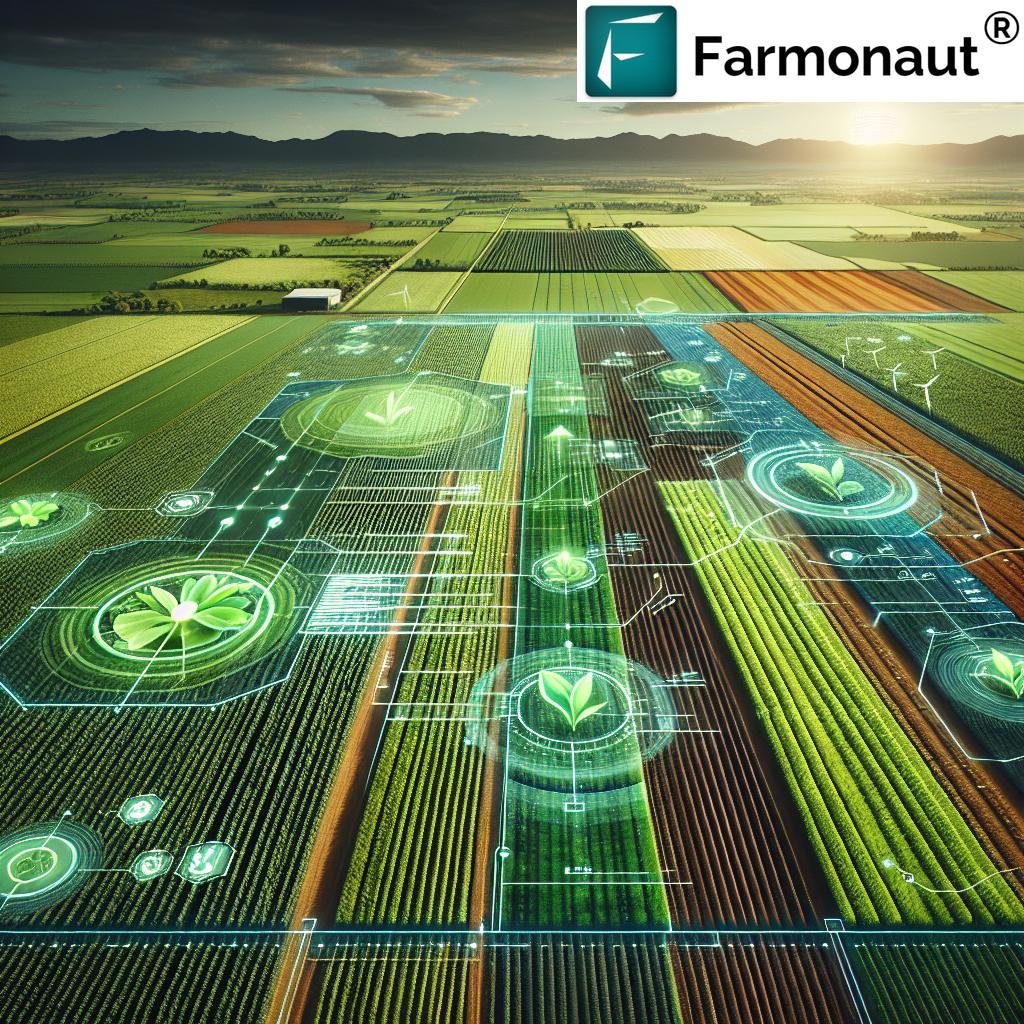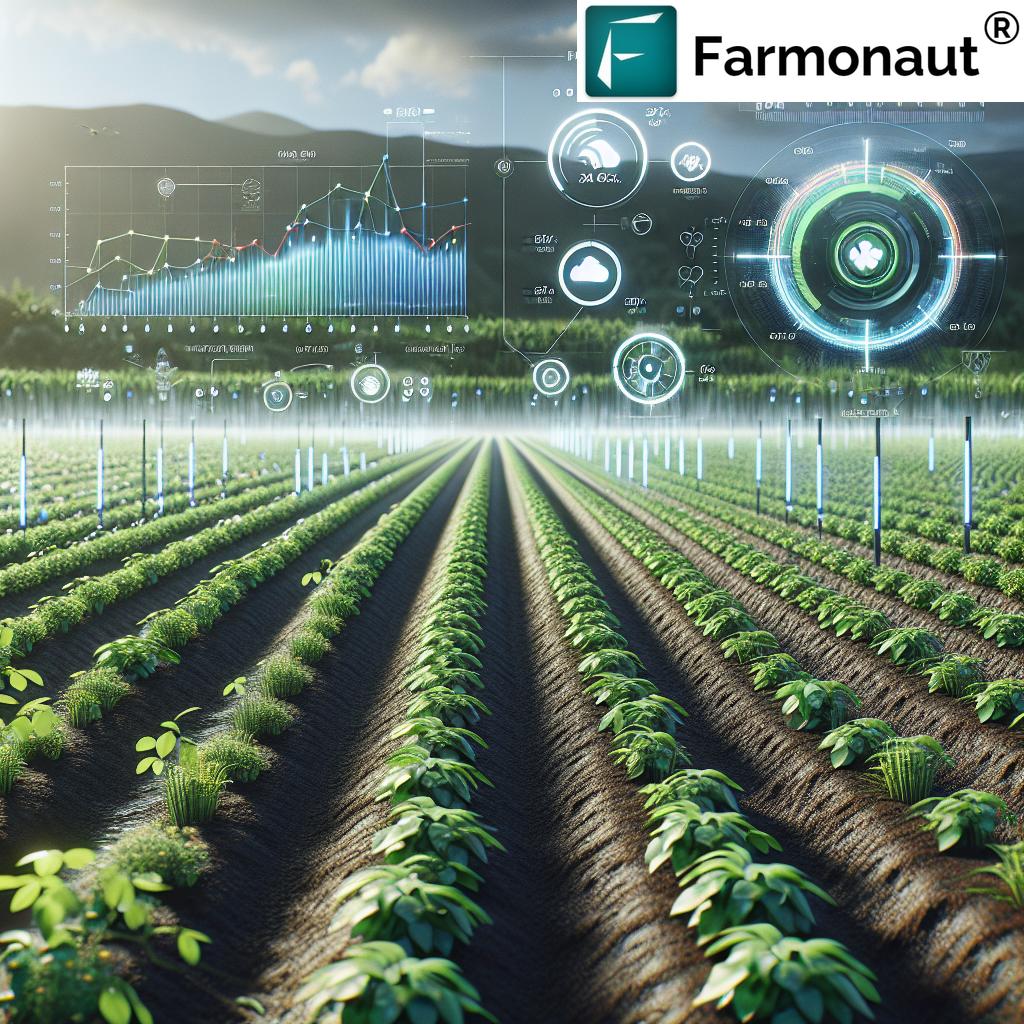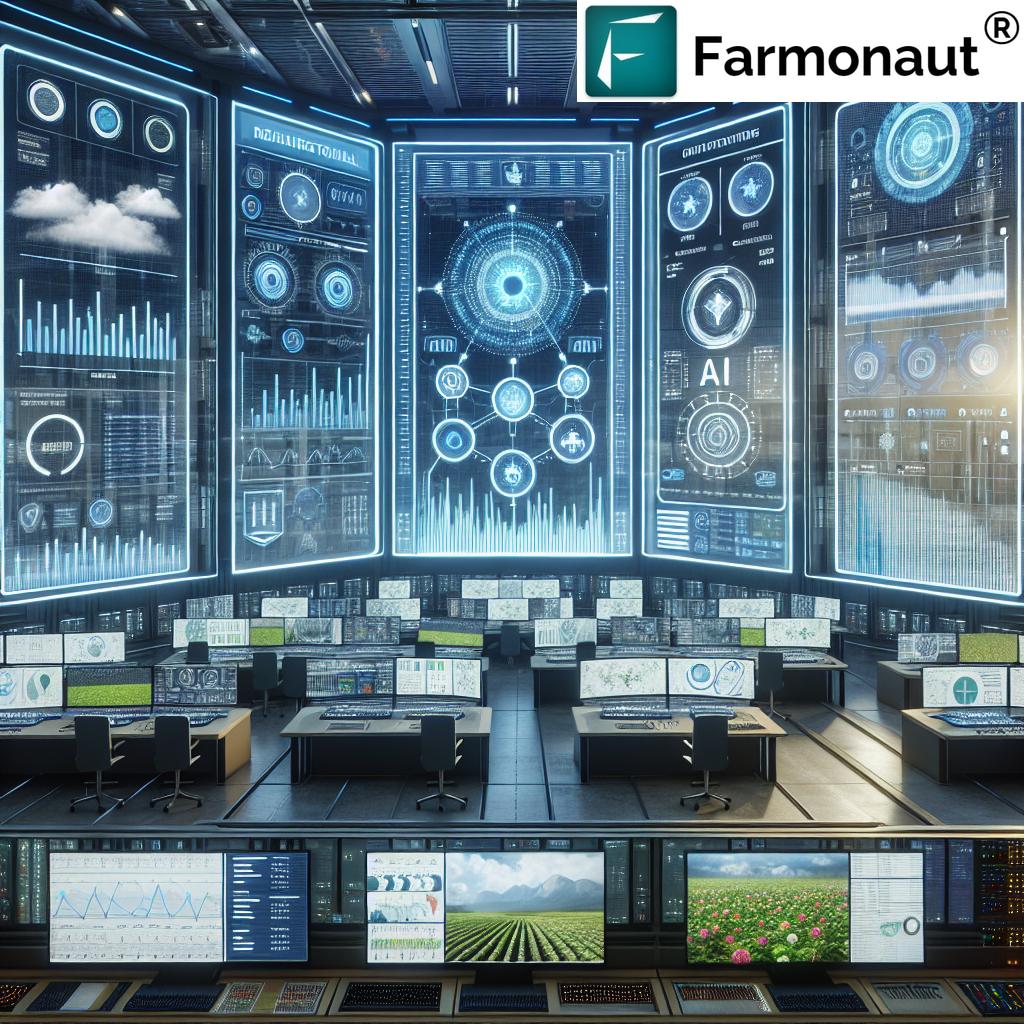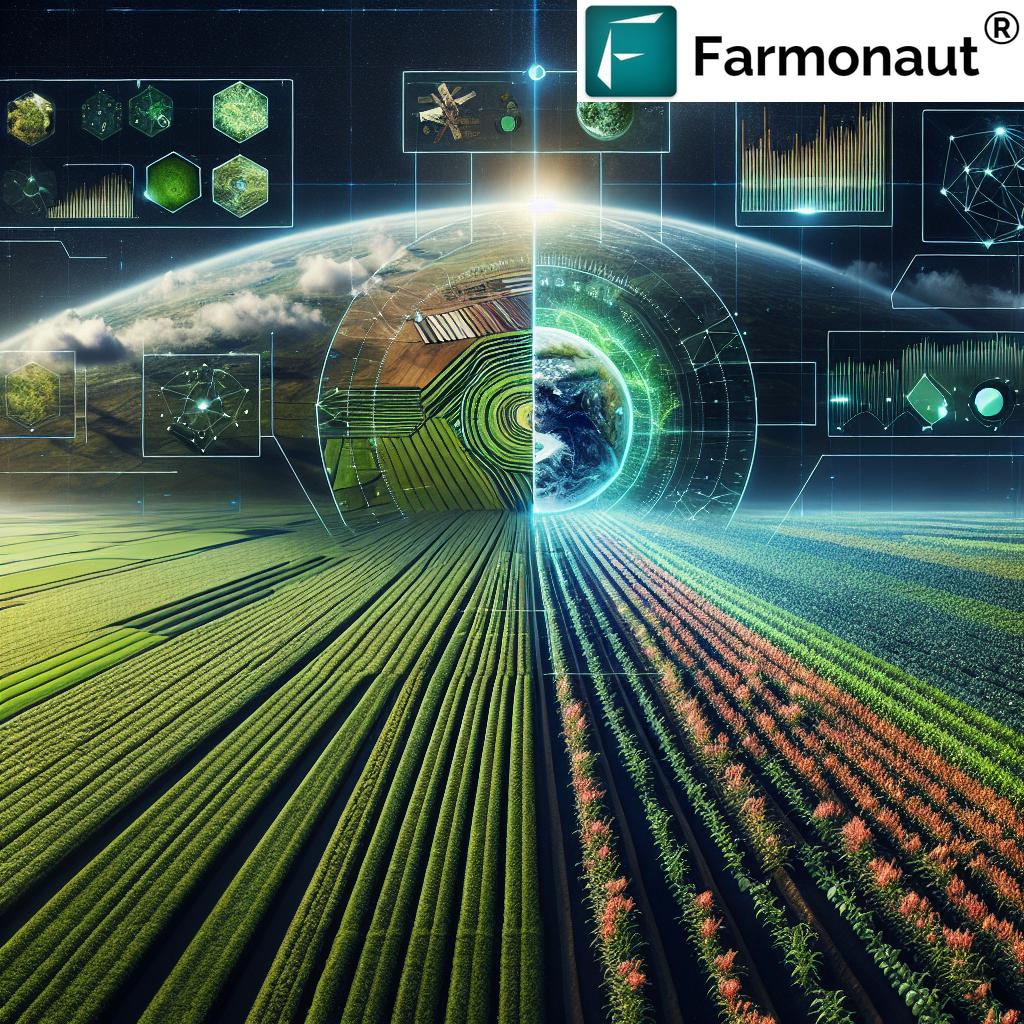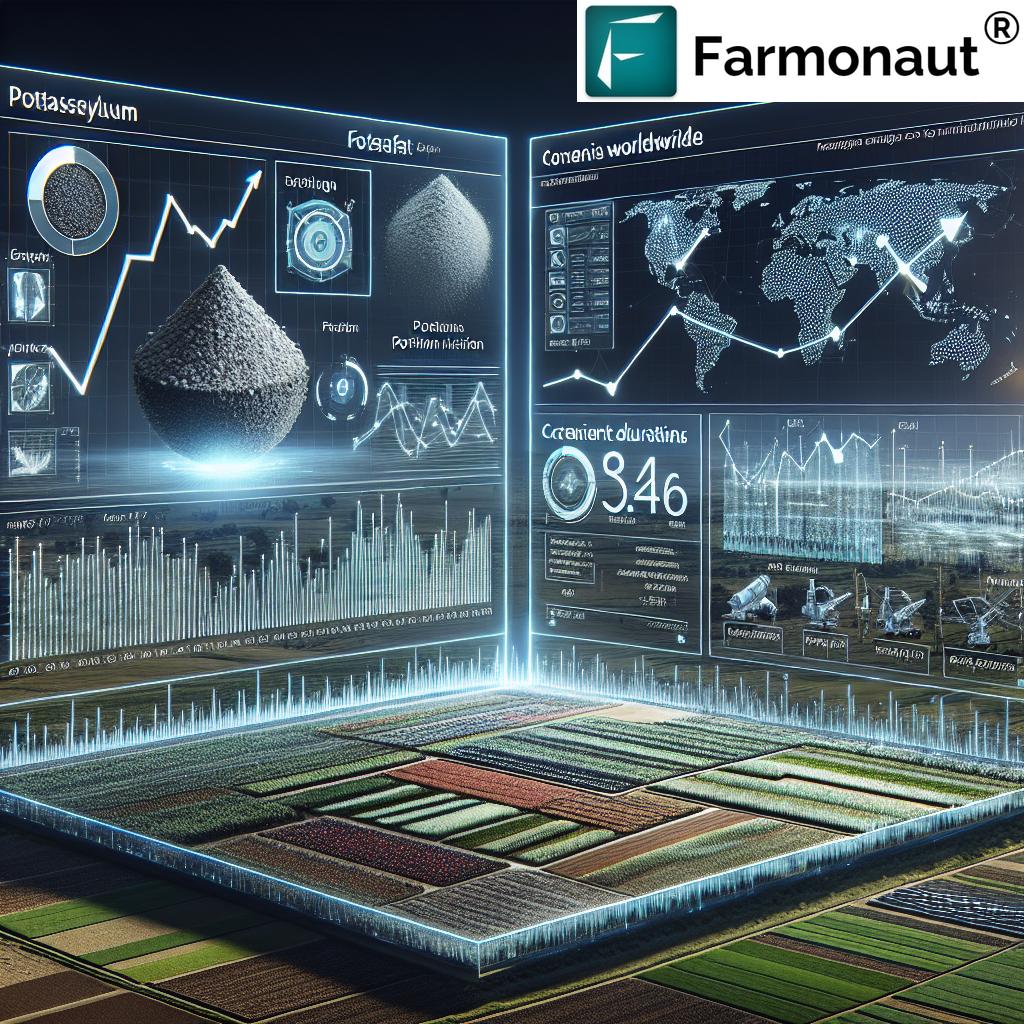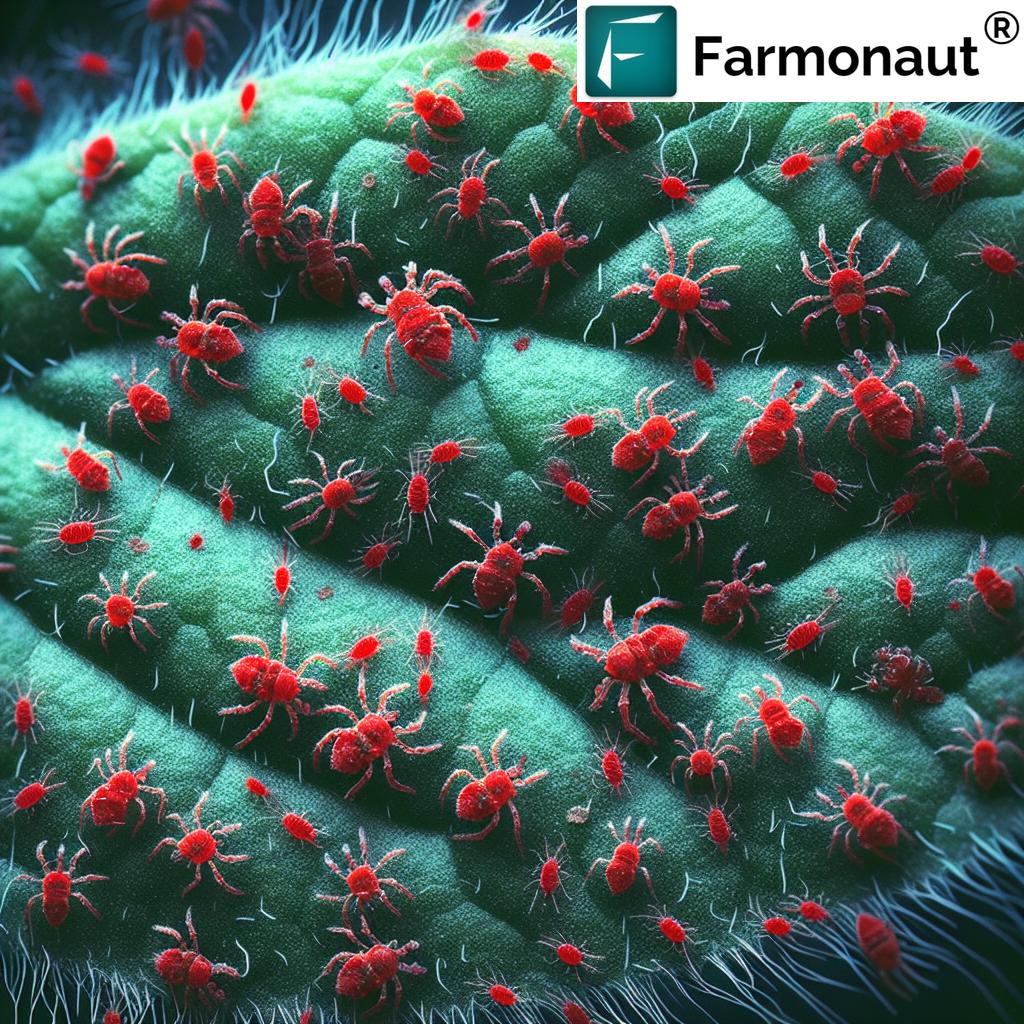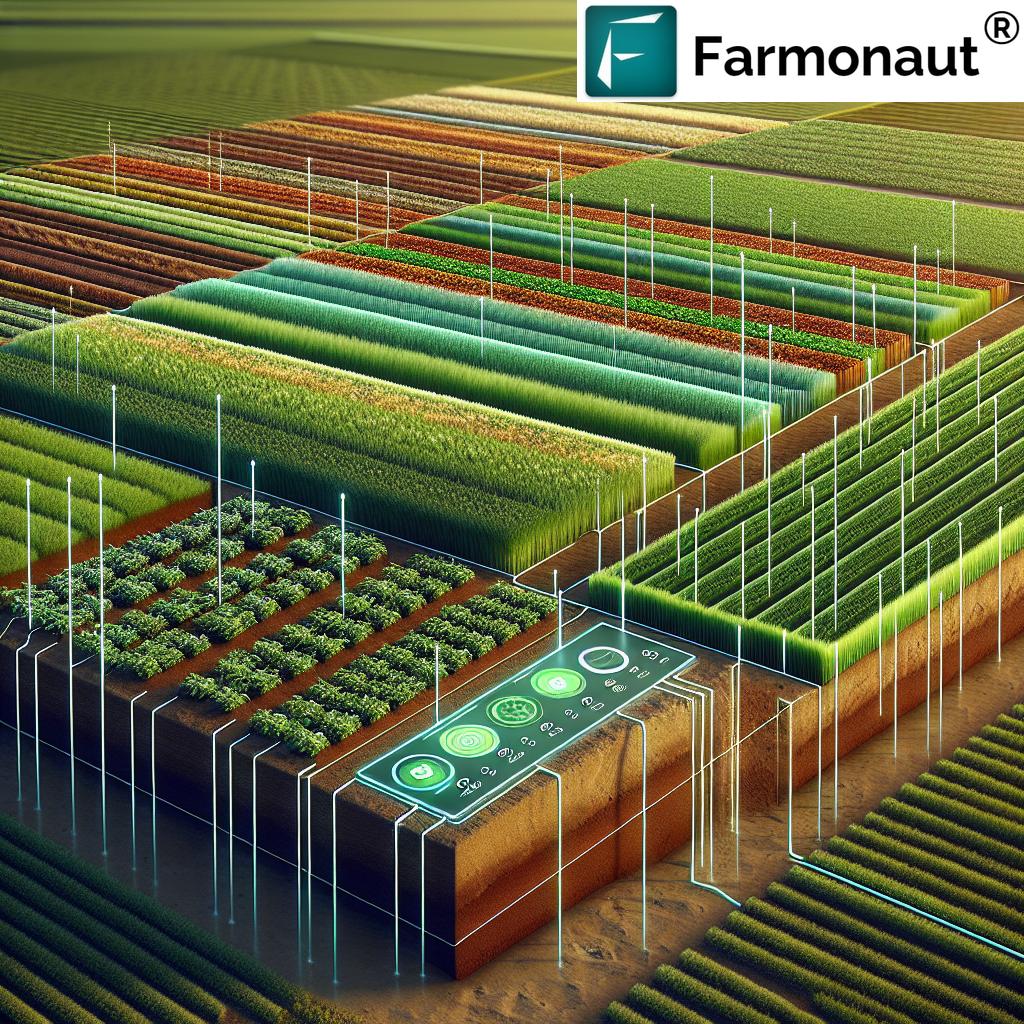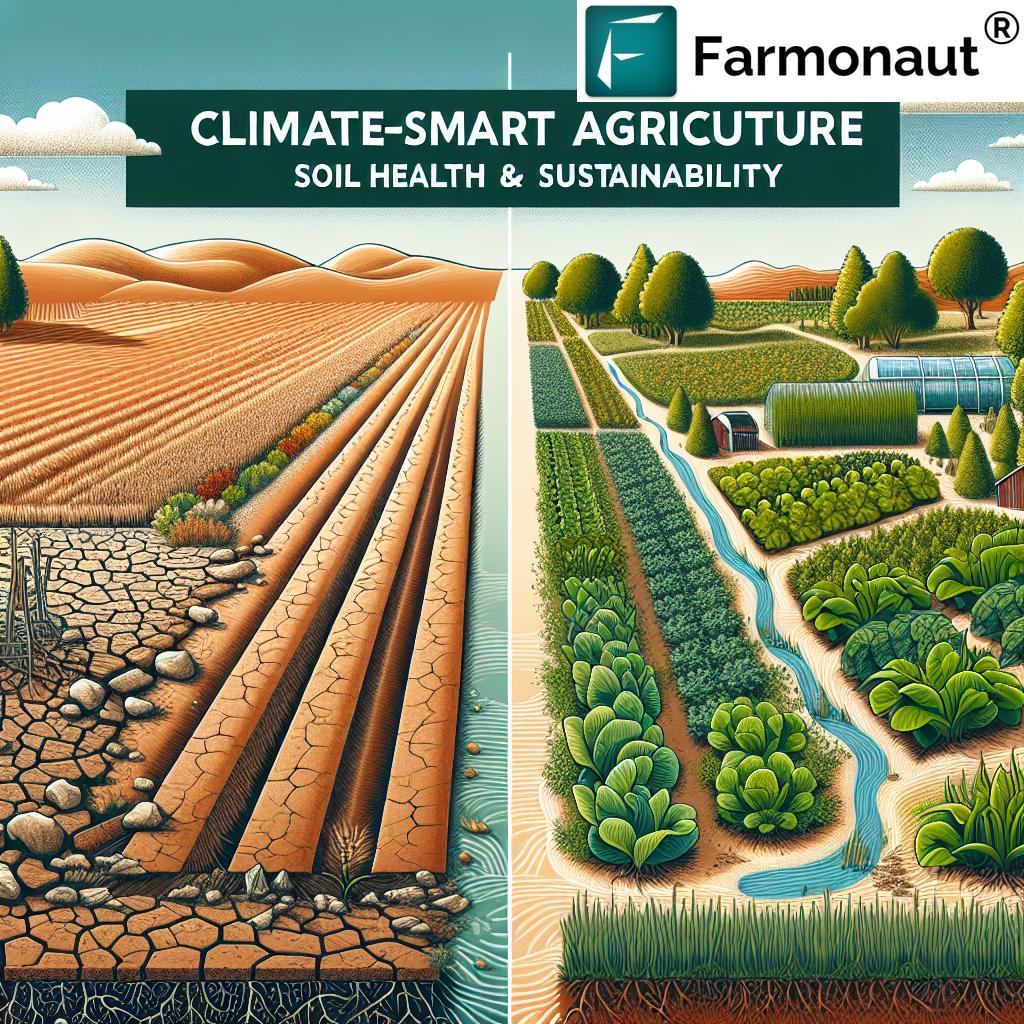Precision Agriculture Solutions: 7 Ways to Boost Yields
“Precision agriculture can increase crop yields by up to 20% using AI-driven data analysis and smart resource management.”
Introduction
Precision agriculture is transforming the future of farming, leveraging cutting-edge technologies like Artificial Intelligence (AI), IoT sensors, drones, and advanced data analytics to maximize crop yields, conserve resources, and promote environmental sustainability. This innovative approach, often called “precision farming technology,” adapts agricultural practices to the precise needs of crops, soil, and fields—using real-time agricultural data for informed decision-making and tailored management.
As global food demand rises and climate uncertainty intensifies, optimizing farming systems is not just an option—it’s essential. Precision agriculture empowers both individual farmers and large agribusinesses to improve yields efficiently and sustainably while minimizing resource waste. In this comprehensive guide, we’ll explore the key components, the seven most impactful solutions, and how we at Farmonaut are making these advanced technologies accessible and affordable worldwide.
What is Precision Agriculture?
At its core, precision agriculture is the practice of managing variations within agricultural fields precisely, rather than uniformly. Instead of treating fields and crops as single entities, precision farming utilizes environmental, geographic, and real-time agricultural data to direct specific management actions for defined areas or even individual plants. This powerful approach relies on a suite of technologies:
- GPS & GIS: For accurate spatial mapping and management of fields using global positioning and geographic information systems.
- IoT Sensors: To continuously monitor soil moisture, crop health, temperature, and other vital environmental parameters.
- Drones/UAVs: To capture high-resolution, multispectral imagery and efficiently assess crop health over large areas.
- AI & Machine Learning: To analyze vast arrays of agricultural data and automate crop health, yield prediction, and pest or disease detection.
- Variable Rate Technology: Enabling site-specific application of fertilizers, pesticides, and irrigation to minimize input waste and environmental impact.
Precision agriculture integrates these “smart” tools into an interconnected decision-support ecosystem—helping farmers monitor field conditions, analyze performance, and optimize resource allocation efficiently and organically.
7 Precision Agriculture Solutions to Boost Yields
Let’s explore each groundbreaking solution, examining what it is, how it works, and its impact on agricultural yield, efficiency, and sustainability.
1. GPS & GIS Field Mapping: Transforming Land Management
GPS (Global Positioning System) and GIS (Geographic Information Systems) are cornerstones of precision farming technology. They enable precise mapping of fields down to the square meter, so farmers can visualize and manage spatial variability—soil properties, nutrient levels, crop health, and even microclimates—across their land.
- GPS provides accurate location data, ensuring autos guidance for tractors, planters, and harvesters, reducing overlap and input waste.
- GIS software processes this information into detailed maps, revealing patterns (like nutrient hot spots or stress areas) to inform targeted planting, fertilization, and harvesting.
By harnessing GPS & GIS tools, growers can pinpoint areas of high productivity, detect issues quickly, and adapt management practices to maximize overall yield while minimizing costs.
2. IoT Sensors in Agriculture: Monitoring Climate, Soil, & Crops 24/7
IoT—Internet of Things—brings real-time intelligence to agricultural fields using interconnected sensors that monitor critical parameters:
- Soil Health Monitoring: Sensors track moisture content, salinity, temperature, and even nutrient concentrations.
- Weather & Microclimate Data: Devices record rainfall, wind, humidity, ultra-local forecasts—crucial for scheduling irrigation and inputs.
- Pest and Disease Detection: IoT devices can alert farmers instantly to problems, enabling targeted response that reduces pesticide use and prevents crop loss.
- Equipment & Resource Use: Telemetry-enabled machinery and irrigation systems ensure optimal deployment of labor, water, fertilizers, and pesticides.
This continuous flow of agricultural data allows for timely interventions—delivering water only when needed, or applying inputs precisely where deficiencies are detected. IoT sensors in agriculture are proven to reduce resource waste and increase yields by boosting environmental efficiency.
3. Drones & UAVs: Aerial Crop Monitoring Systems
Unmanned Aerial Vehicles (UAVs), or drones, represent a leap forward in crop monitoring systems. Equipped with multispectral cameras and NDVI sensors, drones:
- Rapidly scan and photograph entire fields—including large, inaccessible, or uneven terrain
- Provide high-resolution and multispectral drone imagery for crop health assessment
- Detect early signs of stress, disease, and pest infestations using thermal and spectral analysis
- Map variability to optimize inputs and track crop development week by week
By replacing manual scouting, drones enable efficient, timely, and cost-effective field monitoring, ensuring that interventions (fertilizer, irrigation, pesticide) are both timely and targeted.
4. Artificial Intelligence in Agriculture: Data Analytics & Decision Support
In a world awash in agricultural data, AI-driven analytics transform raw sensor and imaging data into clear, actionable recommendations. Artificial intelligence in agriculture empowers:
- Automated Crop Monitoring Systems: Real-time detection of crop stress, nutrient deficiency, and weed or pest outbreaks
- Yield Prediction: Machine learning models forecast output based on weather, soil, and crop health trends
- Input Optimization: Algorithms allocate water, fertilizers, or pesticides where and when they’re most needed
- Disease and Pest Diagnostics: AI-powered platforms recognize symptoms via image processing and suggest targeted solutions
By integrating artificial intelligence in agriculture, farmers move from reactive to proactive management—reducing losses, boosting yields, and slashing costs.
Looking for advanced, AI-powered advisory tools? Our JEEVN AI Advisory System delivers real-time, personalized insights, custom crop management plans, and weather forecasts—right on your phone or desktop.
5. Variable Rate Technology in Farming: Reducing Waste, Maximizing Returns
Variable Rate Technology (VRT) allows site-specific management of major inputs (fertilizers, pesticides, seeds, and water) based on the unique requirements of each field area—an essential for both resource efficiency and sustainable farming.
- Fertilizers: Apply nutrients precisely according to soil tests and crop needs, avoiding over- or under-application.
- Pesticides: Target only infested zones, cutting costs and minimizing environmental impact.
- Irrigation: Deliver water based on real-time soil moisture and weather data, maximizing use and minimizing waste.
Variable rate technology in farming not only saves money but protects soil and water resources, making modern agriculture more sustainable for future generations.
Ensure the authenticity of your supply chain with our blockchain-based product traceability solutions. Increase transparency, trust, and traceability from farm to consumer.
6. Smart Irrigation Systems: Ensuring Every Drop Counts
In many regions, water is the most limiting resource in agriculture. Smart irrigation systems leverage IoT sensors, soil moisture data, field weather stations, and advanced analytics to deliver water with pinpoint efficiency:
- Detect soil moisture deficits in real-time, triggering automated or recommended irrigation
- Integrate with weather forecasts to avoid unnecessary watering before rain
- Segment fields into management zones to match irrigation to crop and soil needs
This saves farmers time, conserves precious water resources, and ensures “right-time, right-place” hydration for each crop. Smart irrigation systems have been shown to reduce water use by 20–40% while maintaining or increasing crop output.
“Over 70% of farmers adopting precision tech report significant reductions in fertilizer and water usage.”
Concerned about environmental impact? Track, manage, and reduce your farm’s emissions footprint with our carbon footprinting solutions. Move towards climate-smart, sustainable agriculture today.
7. Soil Health Monitoring & Management: Foundation of Productive Yields
Healthy soil is the bedrock of productive, resilient farming systems. Today’s soil health monitoring technologies use a combination of:
- Remote Sensing & Satellite Data: Identify soil organic matter, texture, and compaction using advanced imaging
- On-site IoT Sensors: Track nutrient levels, pH, salinity, and temperature in real time, supporting timely interventions
- Nanosensors: Detect minute changes or emerging pathogens before visible symptoms occur
This continuous surveillance ensures optimal fertilization, focused soil amendments, and a reduction in wasted inputs. In the long run, healthy soils increase productivity, support biodiversity, and enable truly sustainable agriculture.
Managing large acreage or complex agricultural operations? Our agro-admin app offers real-time satellite monitoring, resource management, and AI-driven insights for large scale farm management. Make informed, data-driven choices—effortlessly.
Technology Impact Comparison Table
| Technology Solution | Main Application | Estimated Yield Improvement (%) | Resource Efficiency (%) | Sustainability Impact |
|---|---|---|---|---|
| IoT Sensors in Agriculture | Soil and crop monitoring, microclimate tracking | 8–15% | 20–30% reduction (water, fertilizer) | High |
| Artificial Intelligence Analytics | Crop management, yield prediction, pest/disease diagnostics | 12–18% | Up to 30% reduction (inputs) | High |
| Drones & UAVs | Aerial imagery, crop health evaluation | 5–12% | 15–25% (labor, chemical use) | Medium to High |
| Soil Health Monitoring Tools | Nutrient management, compaction & salinity detection | 6–10% | 10–20% (fertilizer use) | High |
| Satellite Imagery Analytics | Field-wide crop health, drought detection | 10–20% | 20–30% (inputs, irrigation) | High |
| Smart Irrigation Systems | Automated, soil-moisture driven irrigation | 8–15% | 25–40% (water use) | High |
| Precision Seeding & Planting | Site-specific, GPS-guided planting | 5–9% | 10–18% (seed/fertilizer saving) | Medium to High |
Core Benefits of Precision Agriculture
- Boosted Yield: Targeted crop monitoring systems and smart input use increase output per acre.
- Minimized Waste: Inputs like water, fertilizer, and pesticides are only used where and when they’re needed—slicing operational costs and environmental risk.
- Data-Driven Decisions: Continuous feedback from sensors and analytics enables informed, timely actions.
- Sustainability & Compliance: Practices that conserve soil, water, and biodiversity, helping farmers meet regulatory and market sustainability standards.
- Cost Savings: Resource efficiency and automation deliver real, measurable reductions in input and labor costs.
Need hassle-free crop insurance or agricultural loan processing? Get verified satellite-backed data and crop monitoring through our crop loan and insurance solutions—boosting speed, transparency, and security for both farmers and financial institutions.
Farmonaut’s Advanced Precision Agriculture Solutions
We at Farmonaut are committed to making precision agriculture accessible, affordable, and actionable for every stakeholder in agriculture—whether you’re an individual farmer, agribusiness, research institution, or policy maker.
Our platform combines the most advanced satellite imagery, AI analytics, and Blockchain-powered traceability to deliver practical solutions for real-world agricultural challenges, including:
- Real-time Crop Health Monitoring: Access satellite-based NDVI data and multispectral crop health maps within our app. Quickly identify photosynthesis, moisture stress, and emerging crop issues—no matter where you are.
- AI-Based Advisory Systems (JEEVN AI): Receive personalized, automated advice based on field-specific satellite data, historic weather, and best practices. Maximize yield and minimize guesswork.
- Blockchain Traceability: Secure every step of your product’s journey from seed to shelf—boosting consumer trust and compliance.
- Fleet & Resource Management: Easily track agricultural machinery, optimize logistics, and reduce operational costs. Suitable for large estates and cooperatives.
- Carbon Footprinting: Monitor, manage, and reduce the carbon footprint of your farming operations in real-time—critical for modern, sustainable farming.
Start using the Farmonaut platform today via our
Android, iOS, Web Apps, or API. We offer flexible, affordable packages for all scales of agriculture, ensuring powerful, data-driven results.
Are you a developer or agritech enterprise? Integrate satellite and weather data directly into your systems using the Farmonaut API. Developer Documentation available.
Emerging Trends and Innovations in Precision Agriculture
- Autonomous Machinery: Self-driving tractors, combine harvesters, and weeding robots boost efficiency, eliminate overlap, and reduce labor dependency.
- Advanced Machine Learning: Deep learning models predict disease/pest risks before outbreaks occur, enabling instant, hyperlocal interventions.
- Integrated Farm Management Platforms: Unify crop, resource, and logistics management in a single dashboard—improving coordination and bottom-line outcomes.
- Nanotechnology: Nanoscale sensors now enable real-time, granule-level tracking of soil and crop health, ensuring even greater precision in resource allocation.
- Blockchain for Transparency: Comprehensive supply chain traceability supports compliance and builds consumer confidence—especially in export-driven or certified crops.
These innovations are shaping the next decade of sustainable, regenerative, and profitable agriculture.
Challenges and Considerations
While the advantages of precision agriculture are substantial, adopting these technologies does bring unique challenges:
- Initial Cost: Investing in sensors, drones, and analytics platforms can be substantial—particularly for smallholder farmers.
- Technical Knowledge: Learning to interpret data and operate advanced devices or software requires training and ongoing support.
- Data Privacy & Security: Protecting sensitive field-level data (such as yield or input usage) remains a top concern as cloud adoption grows.
- Data Overload: Farmers need actionable intelligence, not just more data. Platforms must clearly translate complex data into practical, everyday decisions.
- Digital Accessibility: Ensuring rural and smallholder farmer access is key—mobile-based tools like those offered by Farmonaut and affordable data-driven platforms are closing this gap worldwide.
By selecting the right technology partner and leveraging modular platforms, farmers can adopt precision agriculture at their own pace and budget, maximizing both return on investment and environmental value.
For multi-site or contract farming, our Fleet Management tools ensure vehicle tracking, route optimization, and operational safety—all from your device.
Start Your Precision Agriculture Journey with Farmonaut
Our flexible subscription plans democratize access to real-time crop monitoring, resource management, and AI-powered advisory services for every scale and type of agricultural business.
Precision Agriculture: FAQ
What is the goal of precision agriculture?
The goal is to improve field and crop productivity while maximizing resource use and minimizing environmental impact by leveraging advanced technologies such as GPS, IoT sensors, AI-driven analytics, and variable rate technology.
How do IoT sensors contribute to efficient farming?
IoT sensors in agriculture provide real-time data on soil moisture, weather, and crop health. This enables precise, data-driven interventions—such as targeted irrigation and fertilization—boosting yields and reducing costs or resource waste.
Is precision agriculture viable for smallholder farmers?
Yes. With affordable, app-based solutions and subscription models—like those offered by Farmonaut—smallholders can leverage satellite data, AI advice, and resource management tools without needing expensive hardware.
What resources are saved by switching to precision practices?
Typical savings include up to 40% less water, up to 30% less fertilizer and pesticide use, and significant reductions in labor and fuel—all through targeted application and real-time monitoring.
How does AI help with pest infestations and disease management?
Artificial intelligence in agriculture analyzes sensor data and drone imagery to detect pests and diseases early, often before visible damage occurs. AI-based advisory systems recommend timely, targeted interventions, minimizing losses and chemical use.
What is variable rate technology in farming?
VRT is a method of applying inputs—like fertilizers, pesticides, and water—at variable rates across a field, tailored to the specific needs of each section, optimizing resource use and maximizing yields.
How does remote crop monitoring benefit farm management?
Remote monitoring via satellite or drone imagery allows farmers to assess crop health and growth without physically inspecting each field, enabling faster and more informed decisions over large or hard-to-access areas.
Can Farmonaut solutions be integrated into existing management systems?
Yes. Our platform is API-enabled, allowing seamless integration of real-time crop, field, and weather data into third-party or custom agricultural management software.
Conclusion
Precision agriculture is the future—delivering more food, using fewer resources, and caring for our planet. By integrating the best of IoT, AI, drone, sensor, and data analytics technology, farmers today are poised to elevate both the productivity and sustainability of their land.
Whether you’re optimizing a family farm or coordinating across tens of thousands of hectares, the focus is clear: Leverage precision, make informed decisions, and maximize every drop, seed, and hour invested.
We at Farmonaut are dedicated to making advanced precision agriculture technology accessible for all. Join us and embark on your precision farming journey—building more profitable, resilient, and environmentally responsible agricultural systems, locally and globally.


